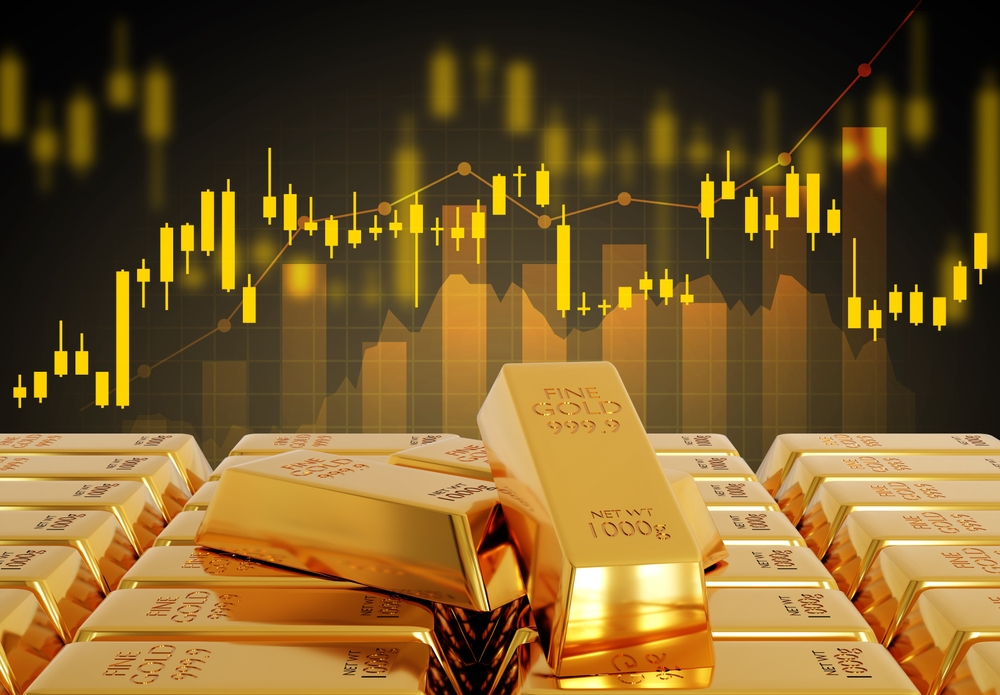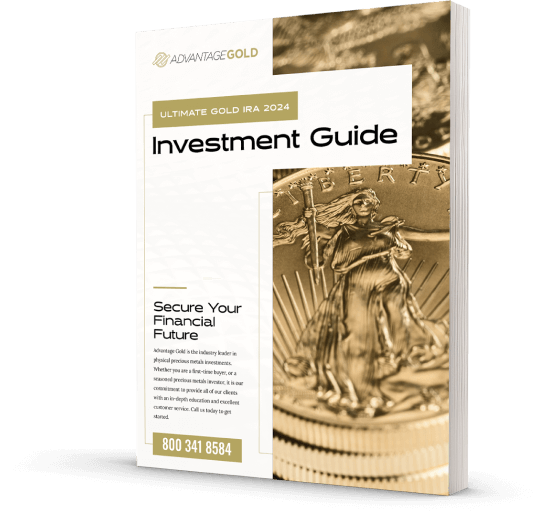
Buying precious metals can be an attractive option for anyone who wants to diversify their investment portfolio. Whether you’re seeking an alternative home for your retirement assets or want to hedge against rising inflation and other economic uncertainties, precious metals can make a lot of sense.
Investors who want to buy precious metals have four main options: gold, silver, platinum, and palladium. While gold is perhaps the most prominent investment metal, the others offer compelling reasons to invest. But how do you know what precious metal works best for your financial situation?
We’ll walk through the pros and cons of each of the four major precious metal investment options, including a cautious outlook on what the future might hold for each one.
Gold is probably the most popular (or at least most visible) precious metal investment. It’s an iconic material that people have treasured for years due to its value and versatility.
Gold holds a distinctive place in commodity markets as a safe haven investment during times of economic uncertainty. Additionally, gold’s low correlation with other asset classes makes it a strategic choice for diversifying portfolios.
What will gold’s value be in five years? Predicting gold prices over that time might be difficult, but analysts and online forecast tools are bullish on their outlook for gold prices.
Some experts anticipate prices up to $2,260 or more per ounce, an increase from its spot price of about $2,000 as of early 2024. That number would also top gold’s record highs—the precious metal topped $2,100 for the first time in December 2023.
Investing in gold offers several compelling benefits that include the following:
Like most investments, buying gold comes with its own set of disadvantages, including:
Remember, while gold offers many benefits, you should consider your financial situation and objectives before making any investment decisions. Speak with a trusted financial advisor before you buy.
Some investors consider silver “gold’s little brother,” but it’s another precious metal that can be a viable investment option. Silver’s price tends to be more volatile than gold’s, which could offer the potential for higher returns at a greater risk.
Investors often seek silver during economic instability. Silver has extensive industrial applications, contributing to its overall demand and market value.
Silver’s outlook over the next five years differs from gold’s, mainly due to decreased industrial production and lack of investor interest. Rating agencies have a rosier outlook ($70 by 2030), but the World Bank expects silver to trade between $20 and $25 over the next five years, roughly in line with its spot price throughout 2023 and 2024.
Silver offers a range of benefits for investors, some of which it shares with gold. These include:
Silver, like gold, has disadvantages, too, like the opportunity cost. Other drawbacks can include:
Before buying silver, do your due diligence. Consider your financial goals and risk tolerance. And always consider speaking to a financial advisor about potential investments.
Platinum is a rare precious metal renowned for its corrosion resistance and exceptional conductivity. It’s a mainstay of industrial production, especially in the automotive industry. Because of its rarity and utility, platinum can see significant price surges during periods of economic growth.
The five-year outlook for platinum prices depends mainly on trends in industrial demand. However, the World Platinum Investment Council sees several consecutive years of deficits and price catalysts building that could drive platinum’s price up or down. Platinum has hovered between about $900 and $1,100 per ounce in recent years.
In addition to diversification, inflation resistance, and physical ownership, platinum’s benefits include:
Platinum doesn’t generate passive income, which could be a drawback for some investors. It’s also subject to the same storage and insurance costs that impact gold and silver. It has other unique disadvantages, too. These can include:
Palladium might not be as well-known as other precious metals, but investors have recently started to notice. Like platinum, palladium is highly valued for its industrial uses in automobile production.
Palladium’s rarity and high demand have led to periods of significant price increases. For investors who want exposure to precious metals, it’s an intriguing option, with a spot price hovering near $1,000 an ounce as of early 2024.
However, palladium’s recent forecasts show a decline primarily due to weak auto production. It’s already slid far after peaking at more than $3,400 an ounce in 2022.
Palladium’s unique benefits as an investment include the following features:
Palladium has its fair share of disadvantages, too. These can include:
Because precious metals share many advantages and disadvantages, there’s no clear-cut answer for investors. Gold and silver are staple investments that generally have enjoyed historical stability, but palladium and platinum offer the potential for big profits if economic and industrial conditions allow.
Ultimately, the best option depends on you and your preferences. Before you buy any precious metal, consider your risk tolerance. Speak with a financial advisor who understands the complete picture, including how these investments will fit into your portfolio.
If you’re ready to invest in precious metals for retirement or diversification, Advantage Gold can help. Contact us today to learn more about opening your precious metals IRA.
What are the pros and cons of investing in gold?
Pros of investing in gold include its liquidity and status as a safe haven asset, especially in uncertain times. Drawbacks, however, include its tendency to go in the opposite direction of interest rates and that it doesn’t provide passive income.
Why should I consider silver as an investment?
Silver is often more affordable than gold, which could make it more accessible for investors with smaller portfolios. It also has industrial uses that can drive demand upward.
What makes platinum and palladium attractive investment options?
Platinum and palladium have significant industrial uses and are extremely rare. Like other precious metals, they offer portfolio diversification and potential long-term growth. Just be aware of potential risks like their price volatility and reliance on industrial demand.
Is a silver IRA a good investment?
Like all investments, a silver IRA carries risks. However, buying silver can be an excellent idea for individuals who want to buy tangible assets to diversify their investment or retirement portfolio. Silver can also exist as part of a broad precious metals IRA, including other materials like gold, platinum, and palladium.

Please note that Advantage Gold and its representatives are not licensed or registered investment advisers, attorneys, CPA’s or other financial service professionals. We do not offer or render any legal, tax, accounting, investment advice or professional services. Additionally be aware that precious metals carry risk of loss and are not a suitable investment for everyone. Past performance is not necessarily indicative of future results and you should always consult your financial and tax professional and carefully evaluate all risks associated with the acquisition of precious metals before making the investment.
The statements made on this website are opinions of Advantage Gold LLC. Past performance is not necessarily indicative of future results. Precious metals, Gold American Eagles, Proof Gold American Eagles, certified gold coins, as well as gold and silver bars carry risk and investing in precious metals directly or through an IRA is not suitable for all investors. Precious metals and coins (i.e. Canadian Gold Maples, Canadian Silver Maples, American Gold Eagles, American Silver Eagles, Proof Gold American Eagles, Proof Silver American Eagles, Certified Gold American Eagles, Numismatic Gold Coins) may appreciate, depreciate, or stay the same depending on a variety of factors. Precious metals can and will fluctuate unexpectedly. Advantage Gold cannot guarantee, and makes no representation, that any metals purchased (i.e. .999 gold bars, .9999 silver bars, or any gold coins) will appreciate at all or appreciate sufficiently to produce a profit above and beyond the mark up/ commissions charged whether they are bought for direct delivery or inside of a precious metals IRA. The decision to purchase or sell precious metals with cash or inside of a Gold IRA or a Gold Backed IRA, and which precious metals to purchase or sell, are the customer’s decision alone, and purchases and sales should be made subject to the customer’s own research, prudence and judgment. By accessing any Advantage Gold content, you agree to be bound by the terms of service. Review the terms of service and privacy policy.
*Consult your tax Advisor.